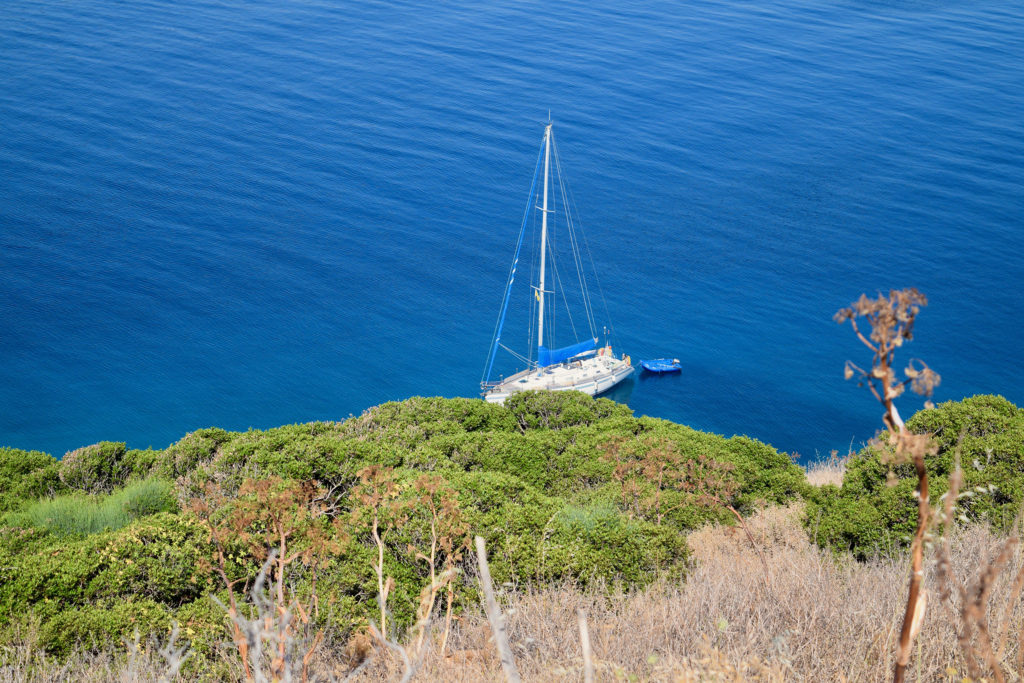
Greece is a land of many islands, large and small, but is there any that is better than our own Raftis island? I think not. Maybe it is lacking in some categories of attraction, like the hottest clubs, sandy beaches, a bustling cultural scene, traditional yet commodious guesthouses, exquisite fish tavernas, etc. But what it lacks in mod cons, Raftis amply makes up with its unique rustic charm, retina-burning orange lichens, steep slopes covered in loose scree, and spiders of extraordinary size. Join us here at BEARS blog, if you will, on a guided tour of Raftis island, designed for the curious armchair traveler who is probably spending a lot of time sitting in front of a computer screen right now.
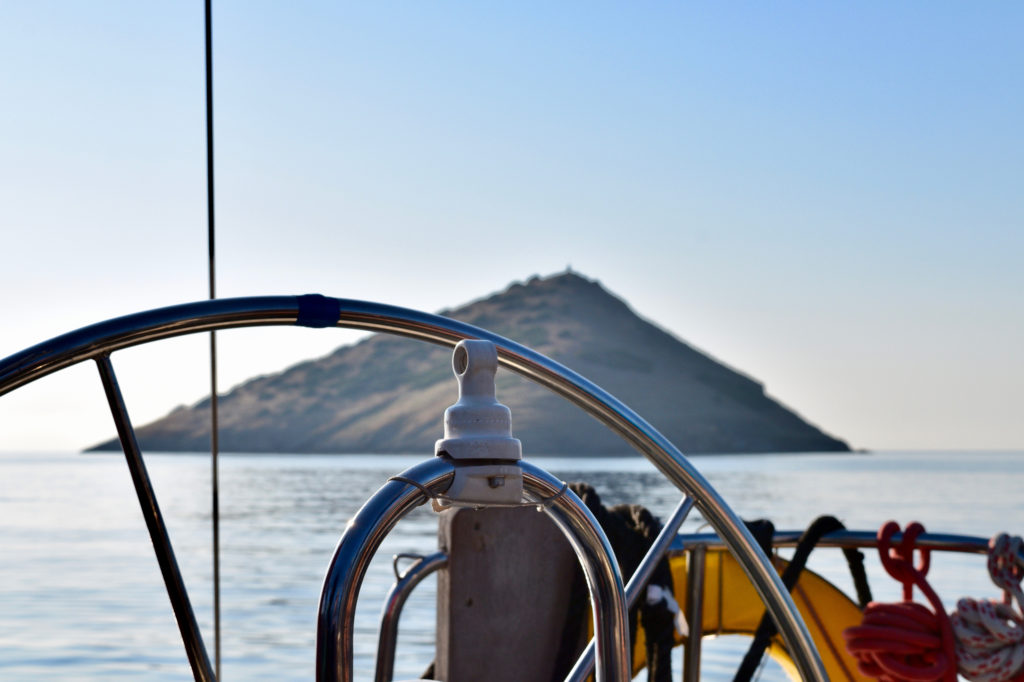
While some of the fancier islands in the Aegean feature advanced infrastructural improvements, such as airports and ferry terminals, for facilitating travelers’ arrival en masse, visitors to Raftis will need to reach the island through independent means. Usually we’d recommend a boat, but swimming is a possibility for the very physically fit and/or those short on cash. Either way, you’ll need to get permission from the harbour masters at the Porto Rafti port before you set off, since the island is a protected heritage site. Usually I have found that vacations do not benefit materially from time spent in the local jail, although sometimes a brief detention can serve as the basis of amusing cocktail party banter several years after the prison brawl bruises have healed.
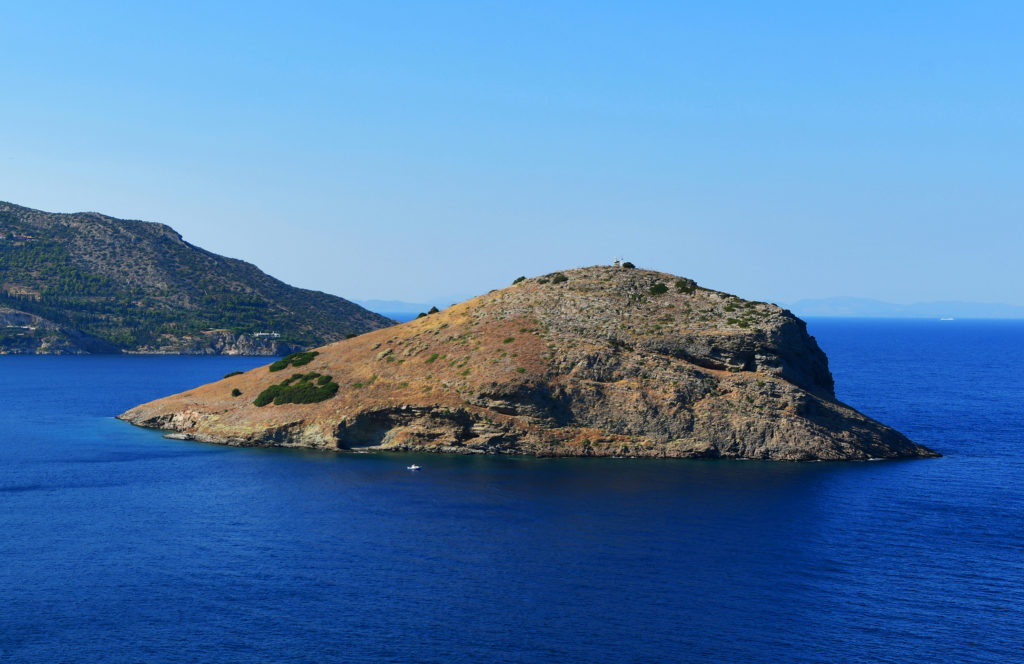
Your initial impressions of Raftis will vary with your chosen direction of attack. From the southern, Koroniward side, the approach provides stellar views of the dramatic cliffs and steep slopes that dominate the southern side of the island. There are often fishing boats parked off the island on this side, as I believe the shelter from northern winds and currents provided by its mass produces calm waters favored by local sea creatures. Either that or the fishermen think the cliffs look as cool as I do. The very steep slopes on the southwest part of the island seem like a terrible candidate for a rich archaeological context, but they are surprisingly covered in Mycenaean pottery. The caves in the cliffs further east are mostly full of bird droppings, on the other hand.
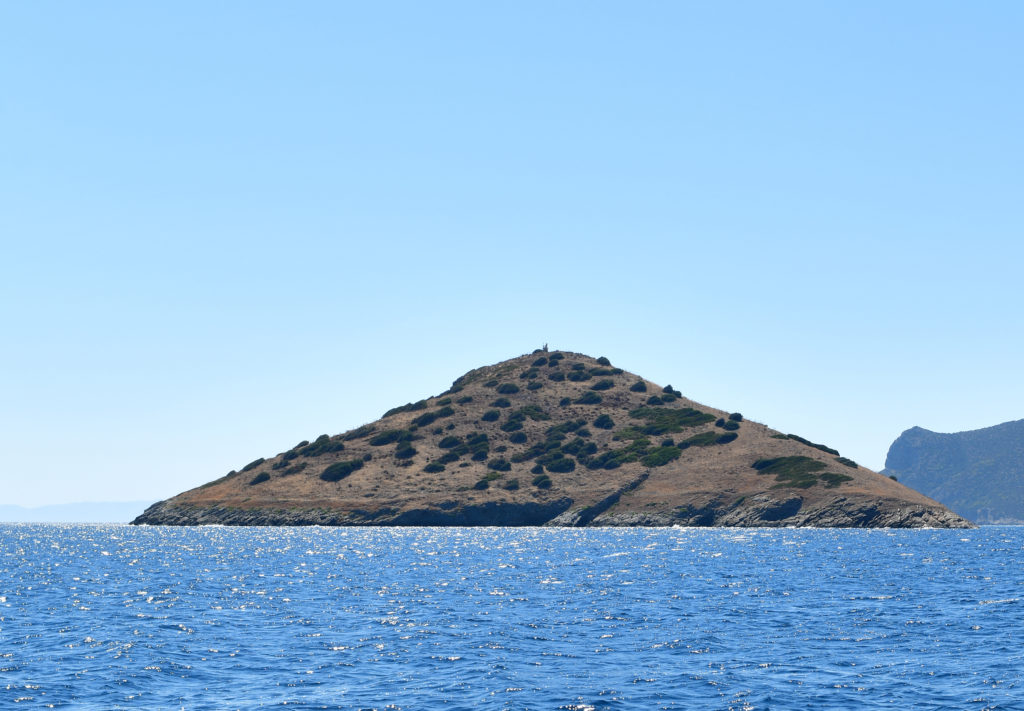
If you approach Raftis from either the west or the northwest, you will find the island to appear perfectly pyramidal in shape, even moreso than that other more famous “pyramid” island with an archaeological site on it. Though some have suggested that Raftis is too small and steep to have hosted a major settlement, there is plenty of architecture on those northern slopes! You can actually see the lumpen berm of soil that has accumulated behind the big circumvallating wall that marks the perimeter of the island in the photos above and below. It’s not exactly a monumental fortification or anything, and it may have served mainly as a terracing feature to prevent soil from the slopes from eroding into the sea. But it was certainly built by human hands.
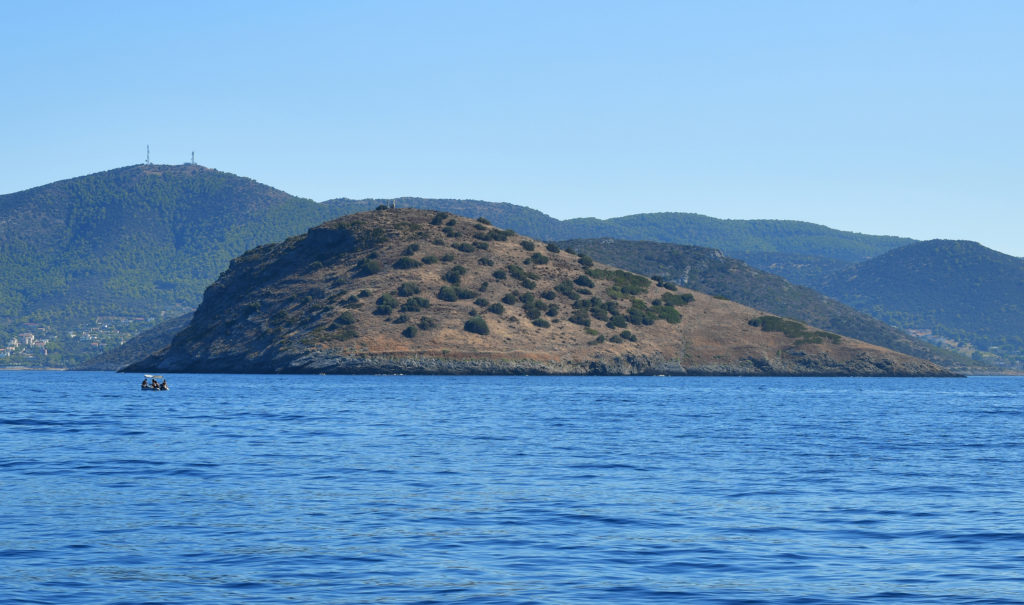

From the north Raftis looks more like a partially submerged horseshoe crab than like a pyramid, which is pretty cool, if you ask me. In the photo above you can see a little tourist pontoon boat full of swimmers who are probably thinking also about how much the island looks like a horseshoe crab.
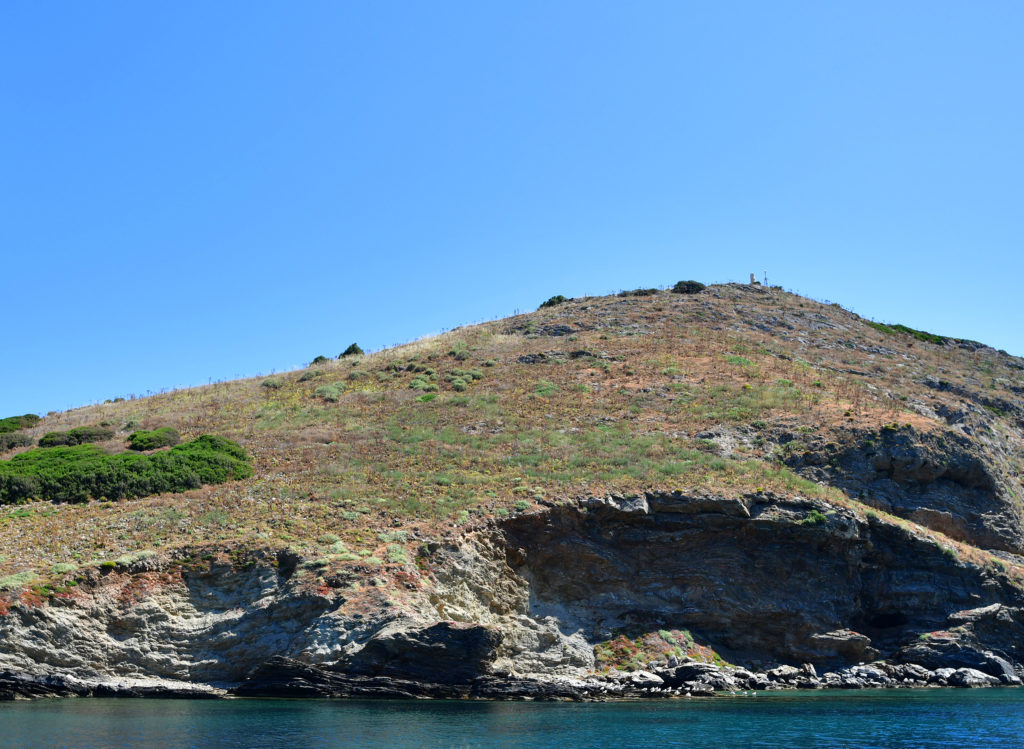
The coast of the island is not particularly stable, and the western and southern sides are characterized by small cliffs that appear to be the result of recent coastal collapse, as indicated by sizeable, fresh piles of rocks, dirt, pottery, and boulders below. The nature of these landforms may suggest that there were once easier approaches to the island from multiple directions, but as things stand now, the only really reasonably place to make a landing is a small cove on the western side of the island, just to the left of the fuzzy light green vegetation visible in the photo of the shore below. I’m not sure if there are more options for the swimmer, but someone with stronger aquatic skills might be able to check it out and let us know sometime!

Once a visitor alights on the island, there are a lot of excellent options for entertainment. The most popular of these is probably a bold ascent to the top of the “pyramid” in order to visit the island’s only permanent anthropomorphic inhabitant, the larger-than-life Raftis (tailor) statue after which the island gets its name.
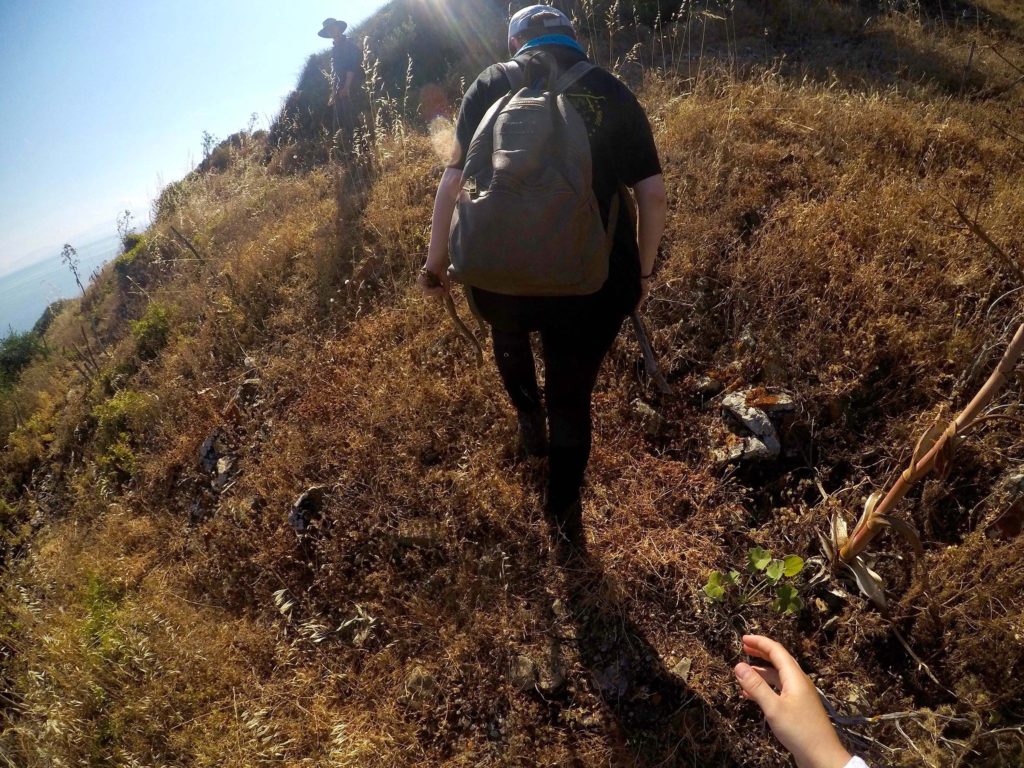
Depending on your capacity for clambering up steep slopes covered in loose stones and dense vegetation, the climb to the top only takes about 5–10 minutes. I’ve even seen it done in beach attire, so you need not worry about gearing up from the Orvis catalog in order to visit Mr. or Mrs. Raftis. Some visitors report the presence of a substantial population of supernaturally large spiders along the route, but visits throughout the year suggest that this is a seasonal issue. By August, when many Europeans take their island vacations, most of the fat, eight-legged Raftis residents seem to have died off or gone into hiding at their own alternative holiday destinations. Other faunal hazards include a number of fuzzy bunnies, a known nemesis to Greek hikers everywhere.
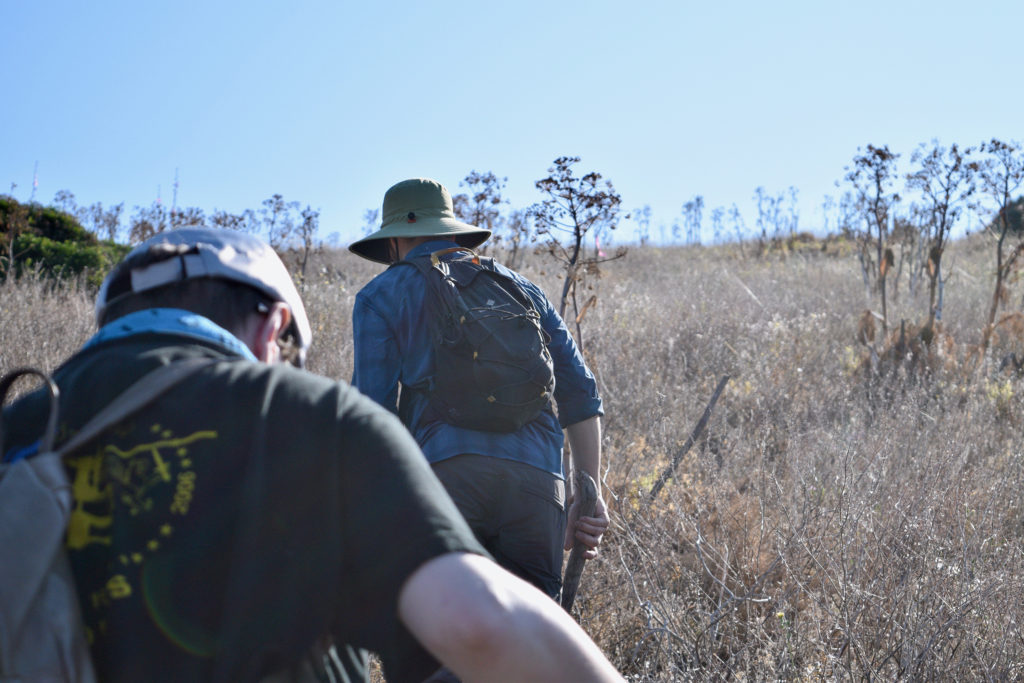
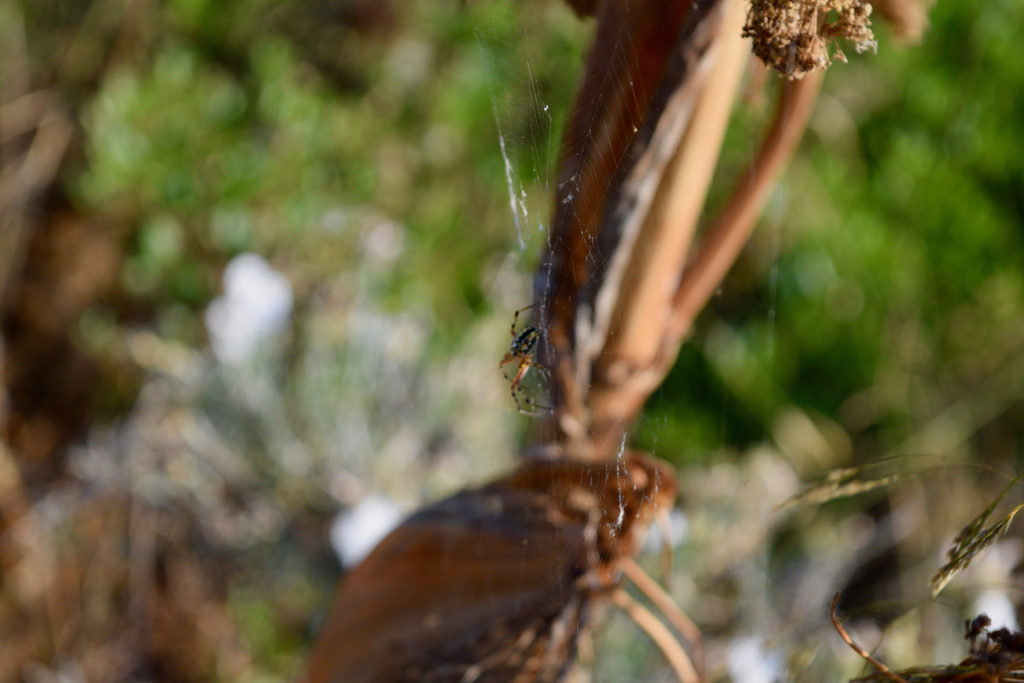
After a modest climb, a visitor will see the Raftis statue looming large on the horizon. Upon achieving the summit, a popular activity is to try to solve the great mystery of the Raftis with your traveling companions. For the ancient sculpture buff, this would involve guessing whether the statue was originally supposed to depict a male or a female, and/or deciding which god or goddess it might represent. If that doesn’t get your engine started, additional topics of controversy include: what the heck is this big Roman statue doing on a tiny island anyway? Who put it there and where did it originally come from? Who took its head, arms, and legs, and chopped the poor guy/gal up? What did he/she do to deserve such a treatment? Why is it called a Raftis? What would a Greek island vacation be without an opportunity to ponder such thrilling mysteries of history?
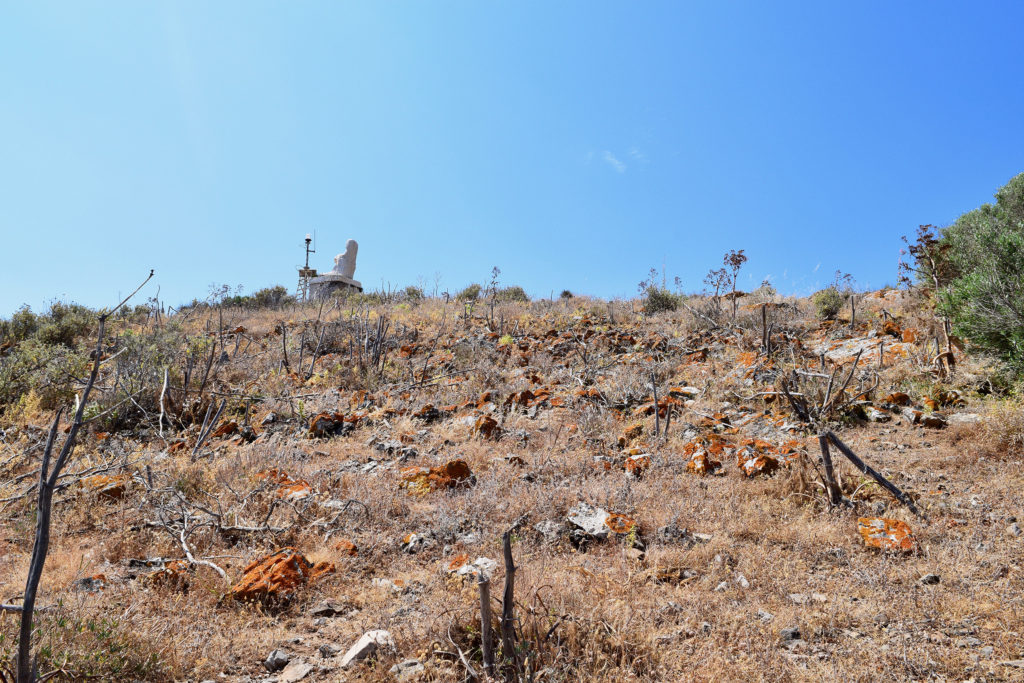
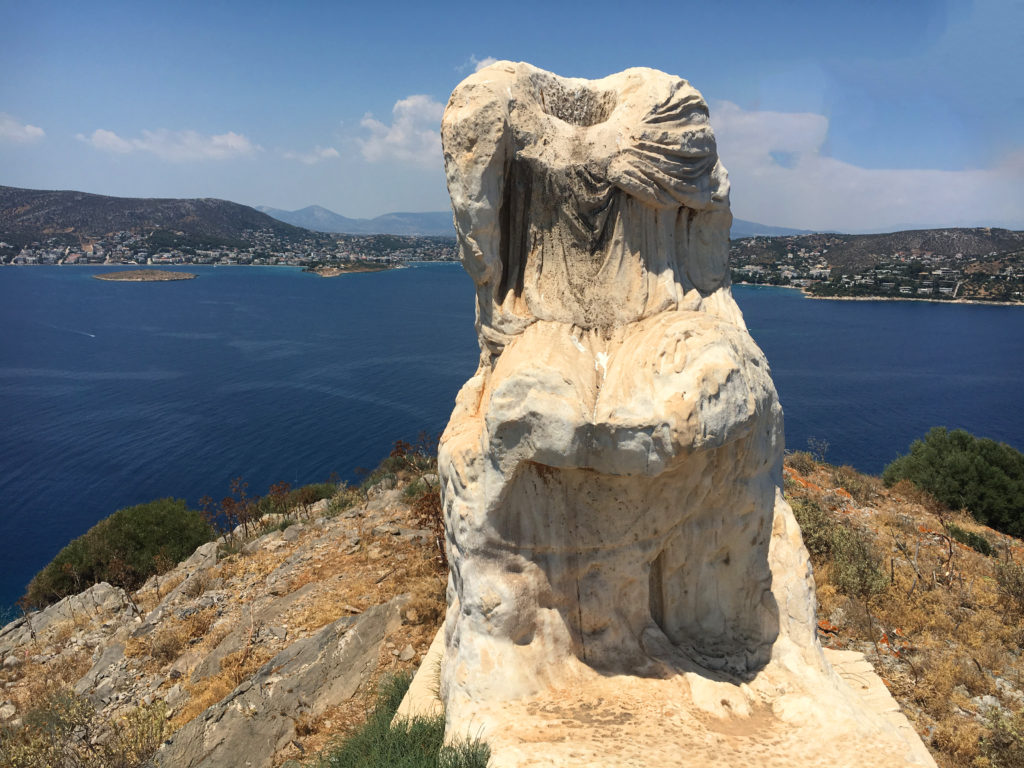
Once you’ve exhausted these debates, having gazed deep into the intellectual void within, why not take a moment to look outward and enjoy the view? To the north is a perfect coastal Aegean scene including the Perati mountain and Raftopoula in the foreground and Hymettos further afield, while to the east on a clear day the vista includes Mt Ochi on Euboea and several Aegean islands, including Makronisos and Tzia in the distance.
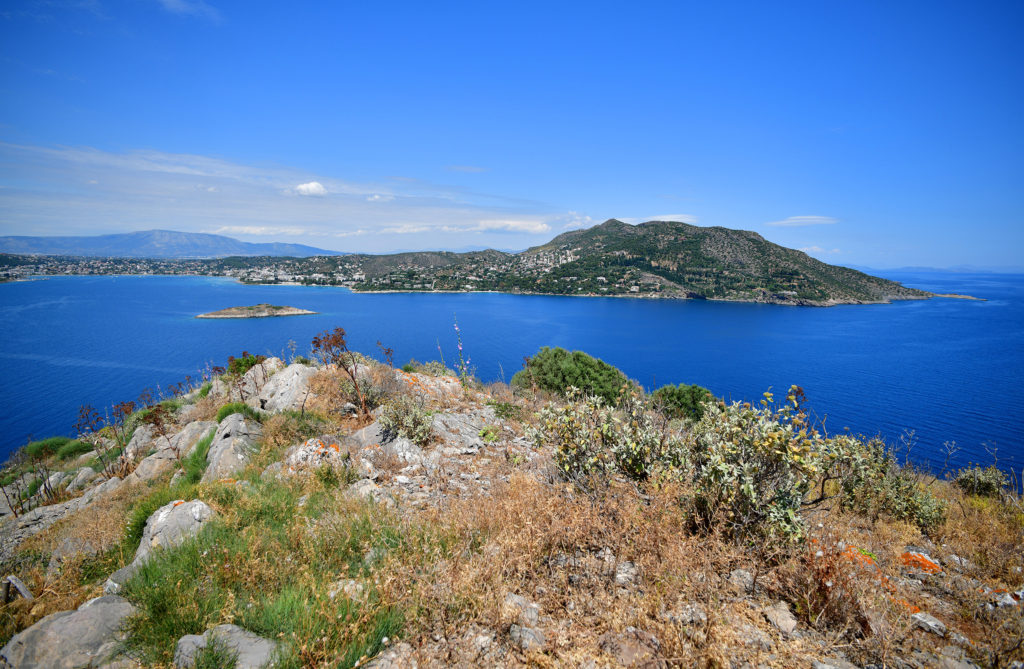
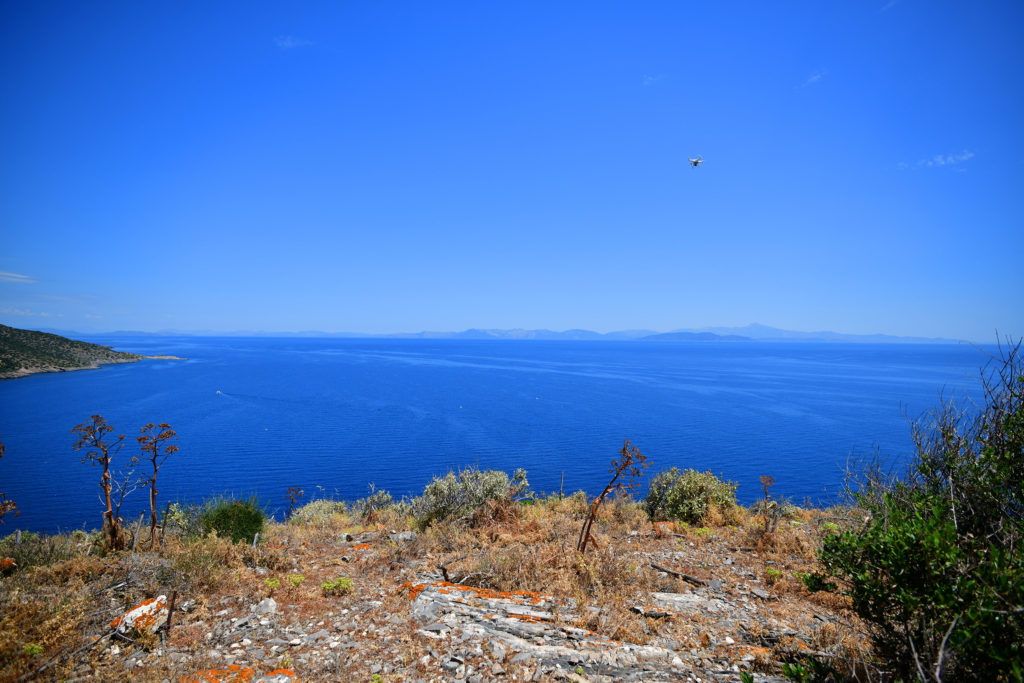
When it is hot outside, the area below the plinth of the statue provides a welcome place to take a break in the shade, and a motley assemblage of beer cans, cigarette butts, and snack wrappers suggests that many travelers have availed themselves of this option in recent years. On the BEARS project we rarely have time to indulge in such leisure activities, and when we do we surely do not leave our detritus around to provide any incriminating evidence. Instead, we pass most of our hours on the island wandering the slopes and staring intently at the ground, as you might expect of a group of dirty survey archaeologists spending so much time on a lump of territory that is pretty much covered in ancient pottery.

But wait, there’s more than just pottery on these slopes! Raftis offers opportunities for the amateur naturalist to appreciate the many different kinds of plants that flourish even in a relatively inhospitable Aegean maritime environment like this little windswept island. Wandering around the island, a person will encounter a variety of flowers that may or may not be in bloom, depending on the season. Summertime flora come June and July include various kinds of bindweed (aka convulvulacaea) and several flowering herbaceous sage species. In the springtime the island is thick with wild fennel plants and several kinds of asphodels, the spiny dead skeletons of which present an obstacle to thorough ground cover on our survey later in the summer, while at the same time helping us out by providing good places to tie the flags denoting the limits of our grid units. If you are planning to enjoy a fresh summer salad during your visit to the island, you’ll be sure to appreciate the presence of ample wild caper plants, especially noticeable on the steep southern slopes, where the wind can’t rip their delicate trailing stems all to shreds.

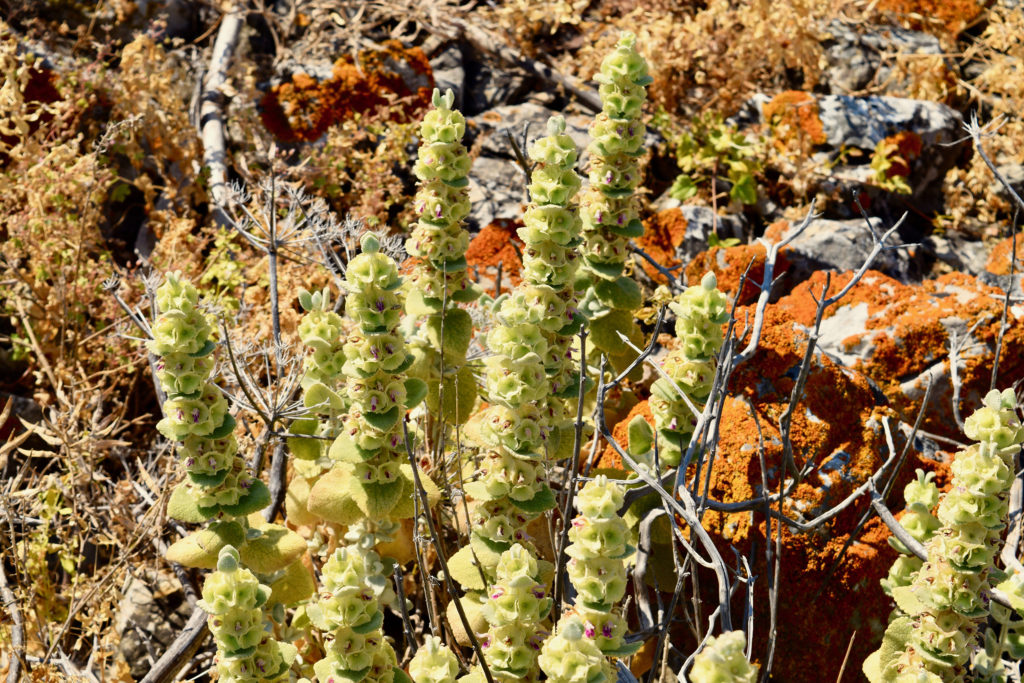
More substantial plant life exists in the form of small phrygana and wild olive trees and shrubberies that pepper the north and northwest slopes. These little trees seem to prefer growing over the remains of ancient buildings or structures, and thus hold many ancient secrets within. A lot of the best preserved finds from the survey on Raftis so far have been pulled from amongst the shelter of their roots.


Otherwise, in the summer you’ll most often be surrounded by tall, dead grasses during your visit, as Joey demonstrates here.
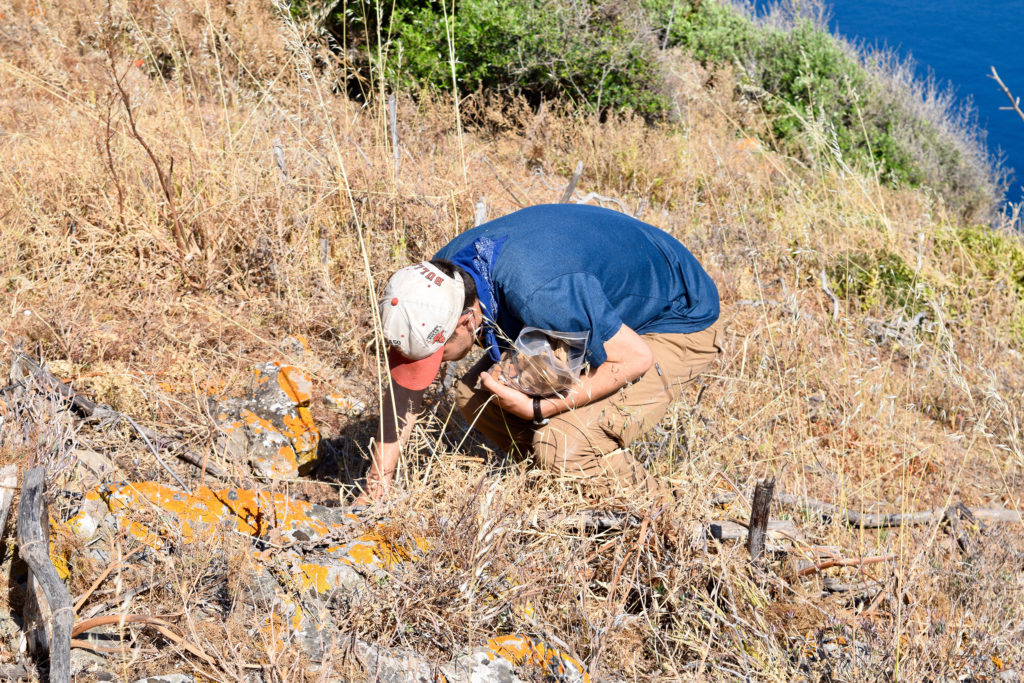
Perhaps the most exciting and visually pleasing natural feature of the island is the very bright crustose orange lichen that grows all over the rocks on the north slope. I refer to this stuff informally as Disco Lichen, but science tells me that it’s actually called Orange Sea Lichen (Caloplaca marina). Even some of our artifactual finds from this sector of Raftis are covered in fluorescent dayglo Disco Lichen, which is pretty fun, you have to admit. Eat your heart out, clubs of Mykonos!
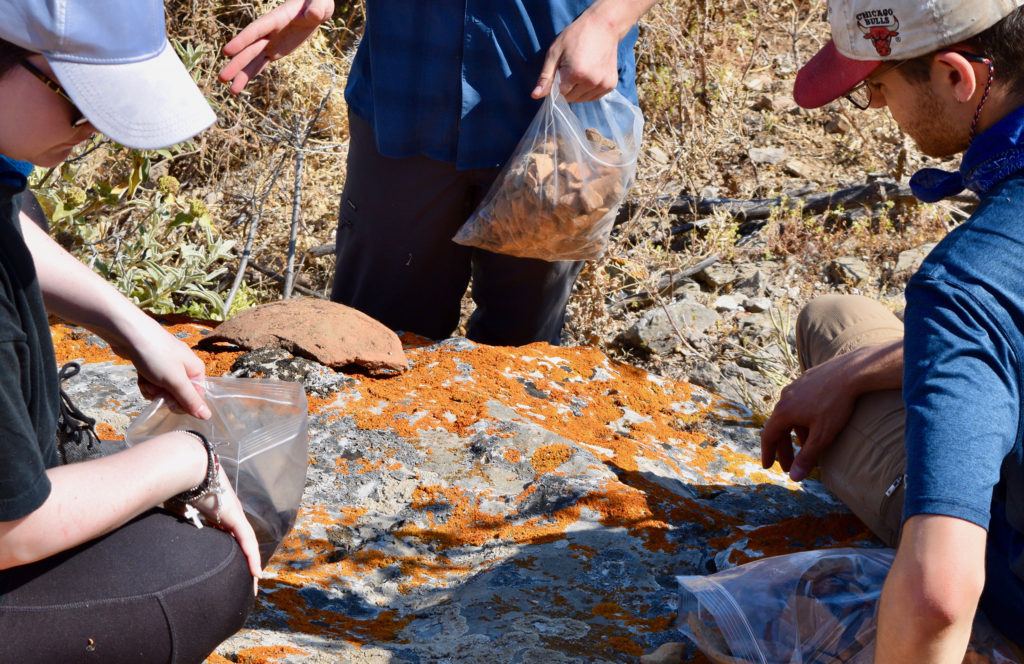
Once you’ve seen Disco Lichen, you’ll probably be too emotionally exhausted to press onward with any more excitement for the day, and this would be the time to descend back down the slope, through the dead fennel stalks and windblown grasses, to your means of conveyance. As you voyage across the bay to return to the mainland once again, I recommend reflecting upon the successes and failures of your life, and the way that your visit to the majestic Land of Raftis really puts all of that petty stuff into perspective.
This concludes our virtual tour of a day out on Raftis island. As you’ll no doubt agree by this point, Raftis really has it all! Just remember when it’s hitting the European Travel Top Ten Lists – you heard it here first.
